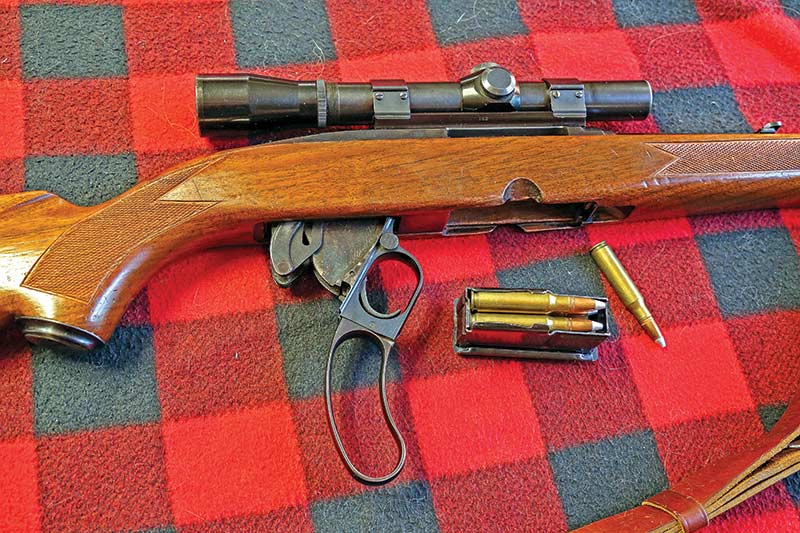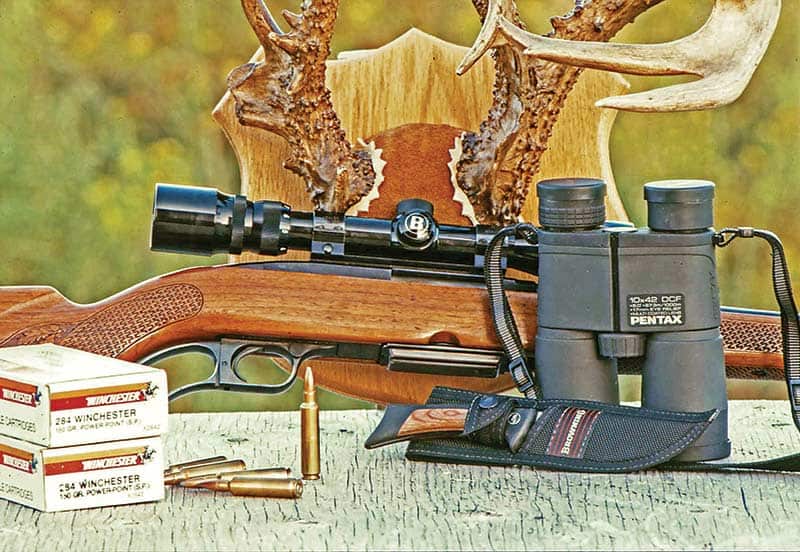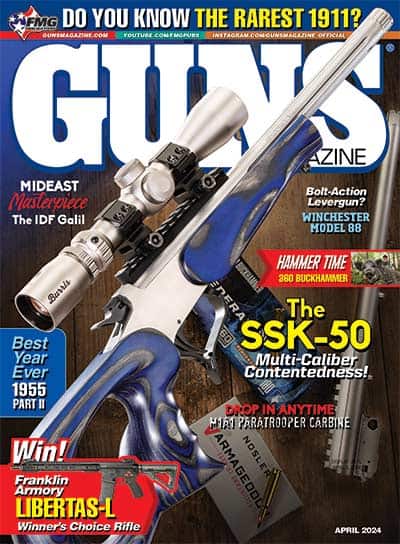The Winchester Model 88
‘Real’ Hunters Don’t Use Levers?
It’s funny how incidents in early life stick with us. In the late 1950s/early 1960s, I was a preteen moppet. I had a BB gun and a pellet rifle and could take Dad’s .22 Savage pump rifle out whenever I could afford 50 cents for a box of .22 Shorts. I couldn’t afford cartridges for Dad’s old Remington-Lee .30-40 Krag — $4.95 for a box of 20! Dad had bought a box years ago and there were still six or eight left, reserved for deer hunting. Besides, the rifle was too heavy, it had iron sights and it was a bolt-action.
Leveraging The 88
A few of Dad’s friends in our small town farming community hunted deer regularly, sometimes going “up north” after mysterious creatures called moose and elk. Some weren’t farmers, they had something called “jobs” which by my standards made them rich — rich enough to buy new factory rifles. At least half a dozen of these discriminating experts owned Winchester 88 .308s. I recall two or three Savage 99s, a couple of Winchester and Marlin .30-30s and even one Winchester 70 .270. I also recall these old-timers (45 years old) were kind enough to show their rifles to a kid.
I remember visiting a friend of Dad’s about 1960. He showed us his model 88 .308. The scope could be pivoted to the left so the iron sights could he used. He mentioned he also owned the same model in .243 Win. One person owning two “high power” rifles was a concept I could hardly comprehend.
I dreamed of owning an 88 but reality intervened. In 1963, at age 14, the only rifle I could afford was a cut-down Lee Enfield .303 British and I began reading shooting columns by Warren Page, Jack O’Connor and others. After a decade I came to think maybe bolt actions weren’t so bad. The first new factory rifle I bought was a Winchester 70 .270. My reading convinced me serious rifle enthusiasts used bolt actions. I recall ads promoting the 88 as the bolt-action rifle operated by a lever.
Even so, it came as a shock when Winchester discontinued the model 88 in 1973. I could hardly believe it. I was six when the 88 first appeared — now, before I was even 24, it was gone. Its discontinuance marked the moment in which I began to ponder the impermanence of worldly things and of life itself. I probably would have gone into a decline and become either a criminal or a monk but as it happened, 1973 was also the year I got married. Marriage restored some sense of order and stability.
Finally …
A decade later a complex series of trades left me with a Model 88, not an early model but the post-’64 version in .284 Win. Of course, with an image of a serious shooter to maintain, I couldn’t be seen hunting with a lever action. I mostly hunted alone so I was able to hunt with the model 88 with the memories of the old-timers who had been kind to a kid long ago. The 88’s spongy trigger wasn’t nearly as good as the tuned pulls on my bolt rifles. Somehow it didn’t seem to matter, for the .284 model 88 was a flat-out killing machine.
One shot in particular stands out. I was on a hillside concealed by trees. A nice whitetail buck was crossing an open field at a brisk walk. I shot offhand at about 150 yards and the buck went straight over sideways and never moved again. I realize now the bullet would have been at the height of its trajectory. Add in a little shooter error and the bullet, aimed for a lung shot, must have gone a bit high and touched a spinal vertebrae.
Full Circle
The .284 remains a favorite cartridge to this day. Still, I was glad when the chance came recently to buy an early model 88, just like the one I was so impressed with long ago. This pre-’64 .308 is in excellent condition and even has the swing-away Weaver rings which I used to fit a ’50s era Lyman scope.
The information I’ve seen indicates 255,549 model 88 rifles with 22″ barrels were made. By cartridge: .308 Win., 110,289; .243 Win., 74,294; .358 Win. (pre-’64 models only), 35,636; .284 Win., 35,330. In addition, there were 28,330 model 88 carbines made with 19″ barrels, barrel bands and plain stocks for an estimated total production of 283,879 units. Sources don’t entirely agree as the last 1973 serial number I can find recorded is H283913. Subsequently a few more rifles were assembled from parts on hand with the highest known serial number being H284971.
The majority of carbines were in .308 Win. Approximately 7,010 were chambered in .284 Win. Kind of a shame the carbine was never offered in .358, I think the carbine and cartridge would have gone together nicely. In the standard rifle with 22″ barrel, I think the .308 Win. is about perfect. Glad I got one though it did take 60 years longer than expected.





